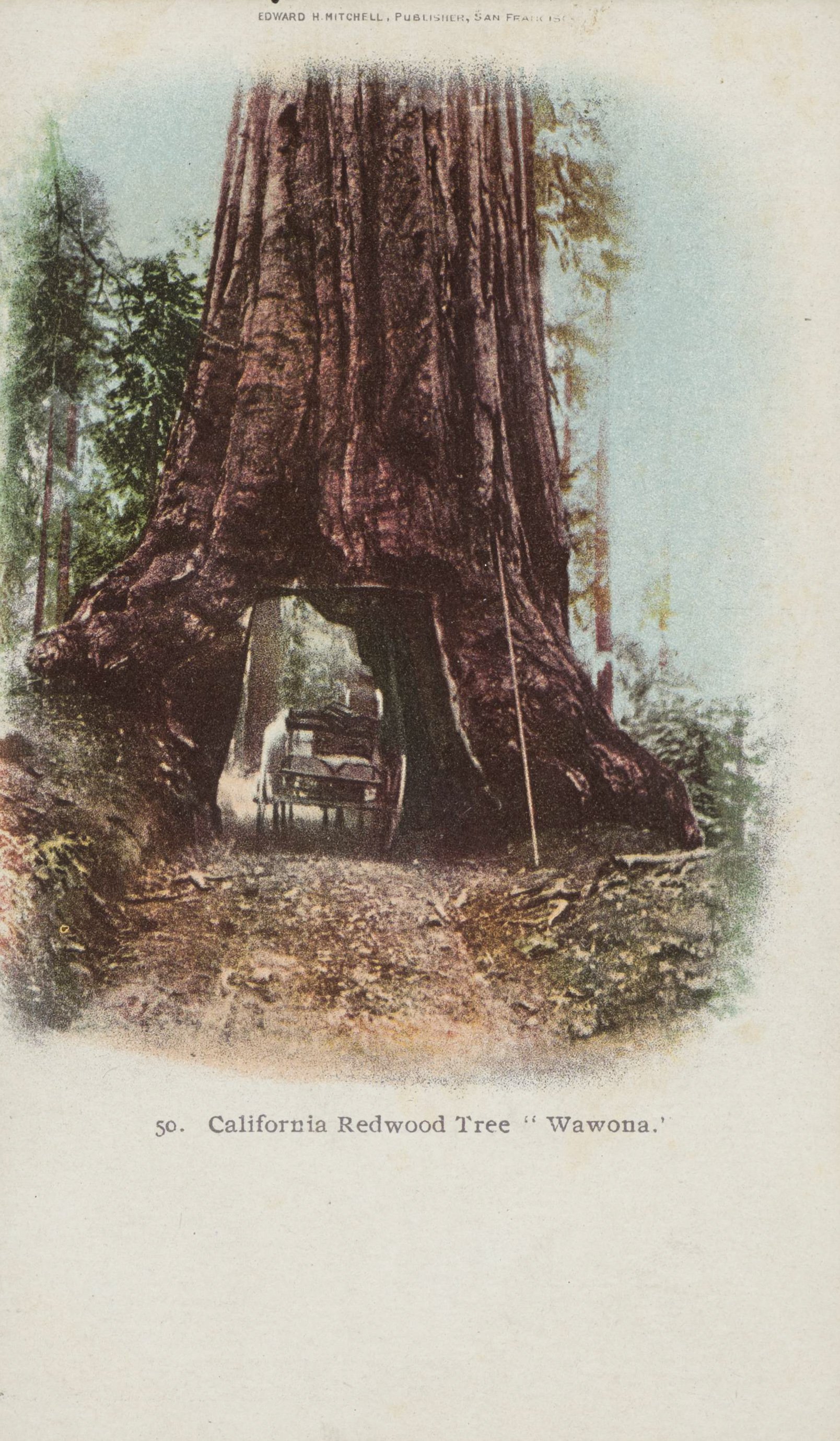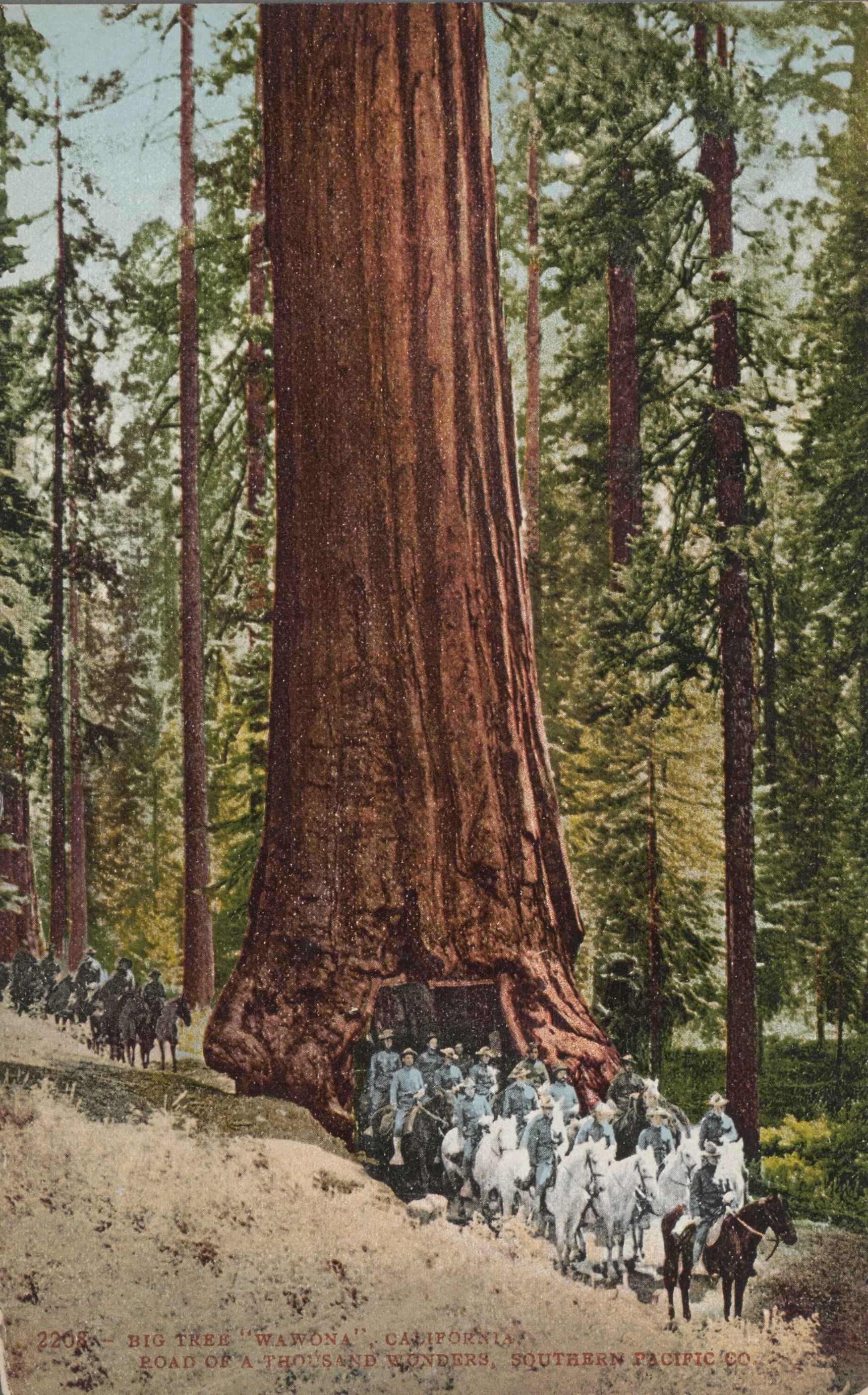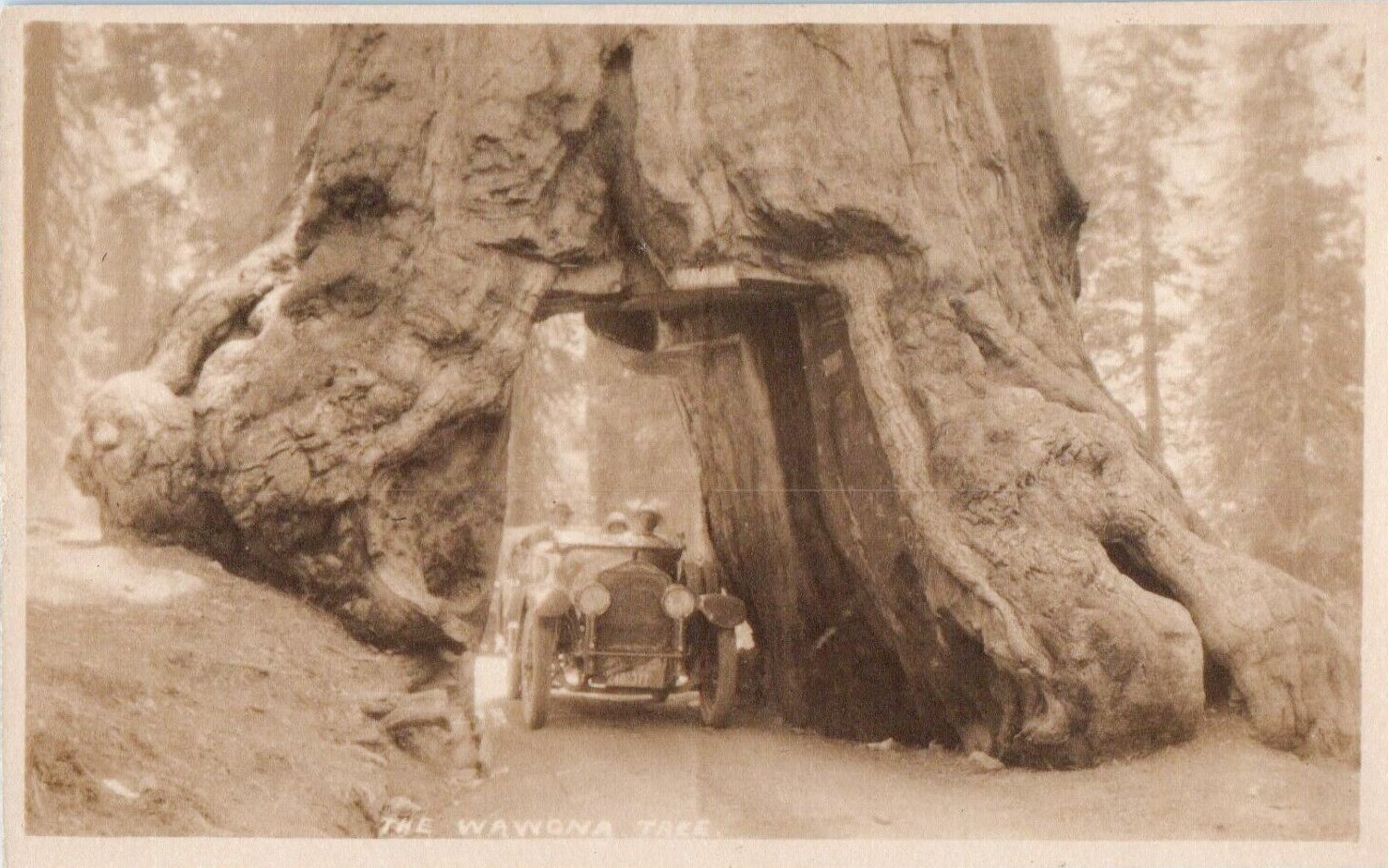While Clark was essential in the protection of the grove, he wasn’t a great business man and in 1874 he sold his property to a trio of brothers- Edward, John and Henry Washburn. The completion of the Transcontinental railroad in 1869 created a tourist boom out west and the Washburns saw potential in the Mariposa Grove. The brothers had been working on improving the road from the gold rush town of Mariposa, about forty-five miles away, to Yosemite Valley. Better roads meant supplies and equipment to build better facilities for tourists. Better facilities meant accessibility for more people, not just the adventurous ones. By 1876 they had expanded area amenities to include a hotel and a toll road to Yosemite Valley. They formed the Yosemite Stage and Turnpike Company in 1877, employing 40 stage drivers and 700 horses. Wawona became a transportation hub, with a barn to shod your horse, and a store to restock your provisions.
Despite such improvements, the Mariposa Grove was a commitment to get to. In 1881, in an effort at sensationalism, the Washburns paid the Scribner brothers to tunnel out a giant sequoia, routed a road through it, and began photographing its visitors. It was a hit. Twenty years earlier, photographers such as Carleton Watkins and Edward Muybridge took the most gorgeous photographs we have of the Mariposa Grove. There is no doubt that these images contributed to its preservation. But nothing enticed the public more than the opportunity to drive through a tree and brag to their friends about it.
In In the Heart of Sierras (1886), Hutchings sets the scene in Wawona, writing “The very instant the bridge is crossed, on the way to the hotel, the whole place seems bristling with business, and business energy. Conveyances of all kinds, from a sulky to whole rows of passenger coaches, capable of carrying from one to eighteen or twenty persons each, at a load, come into sight. From some the horses are just being taken out, while others are being hitched up. Hay and grain wagons; freight wagons coming and going; horses with or without harness; stables for a hundred animals; blacksmiths’ shops, carriage and paint shops, laundries and other buildings, look at us from as many different stand-points.” The Wawona Hotel and barn still stand today.
[expand on tunnel tree specifically, project to remove the parking lot 2018…]

































